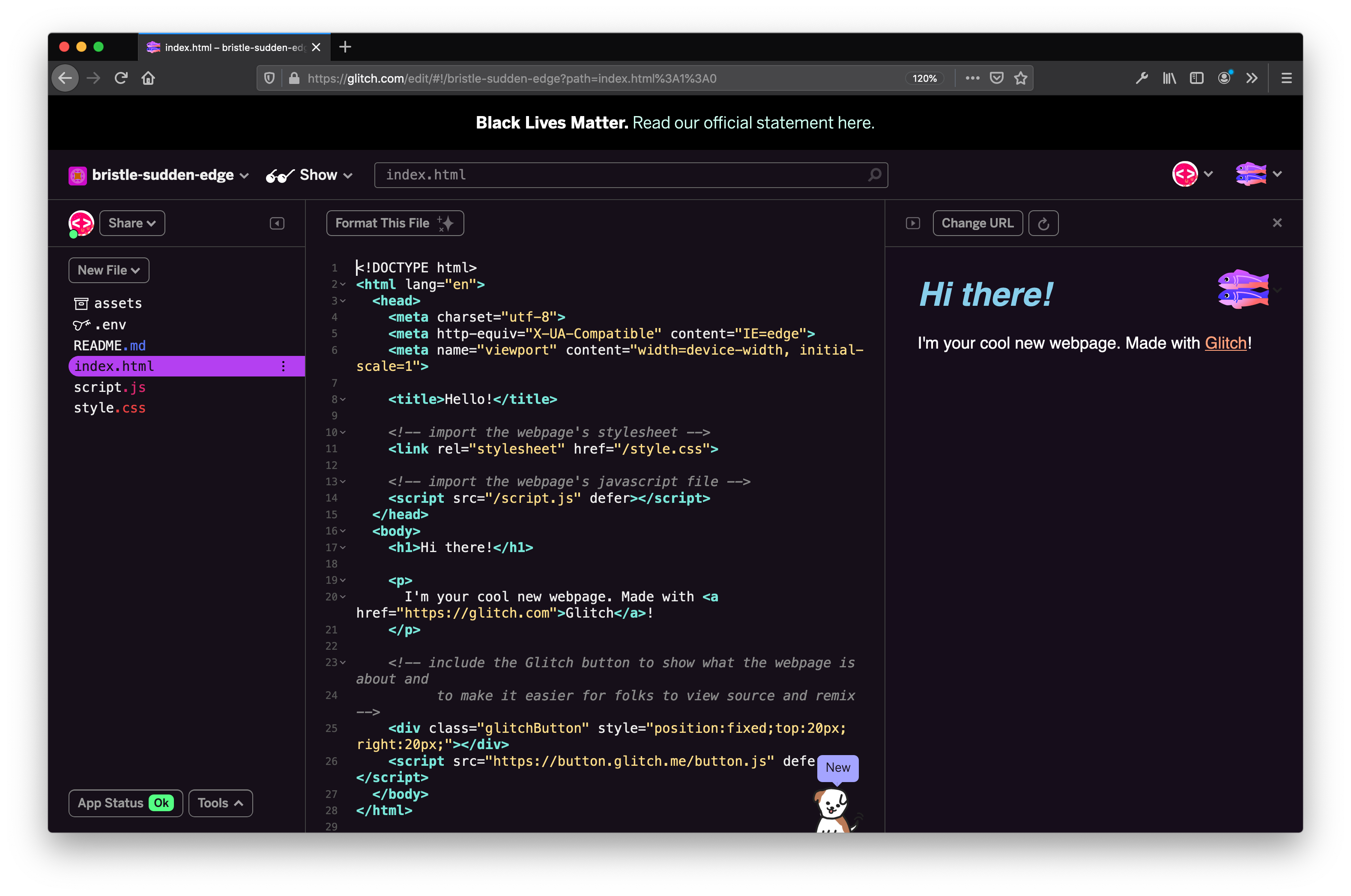Learn Some HTML
During the Remote Design Week conference, a talk by Glitch’s Design Director, Cassie McDaniel, pushed me into asking a question in the RWD-specific Slack workspace:
Would anyone want to learn HTML using Glitch?
Turns out, yes, people would like to learn HTML.
I remixed a quick form on Glitch to gather contact information, bought the domain name LearnSomeHTML.com (for $1!) to send emails from, and in about a week I was doing live streams on Jitsi Meet and sharing source code with eager learners.
The preparation for the live streams turned into outlining sessions for a collection of courses, divided into tiny segments, from beginner levels to more advanced topics.

Getting it out the door
I’ve already outlined multiple courses, but producing takes time. Because I wanted to share things as soon as possible, I decided to reformat them as email-based mini-courses.
The course will run for 10 weekdays, and at the end of the course, we will do a live stream to go over the learnings.
The mini-course will be focusing on a few topics:
- Glitch Basics
- Semantic HTML
- CSS Basics
- Layouts in CSS
- Servers and Hosting
They won’t be advanced, as 10 emails are not enough to dive deep into any of these topics. But they will be starting points for a place to call your own on the web, and a jumping-off point for the advanced topics.
Why Am I Doing This?
I love HTML.
I see it as a tool for self-expression.
It’s the reason why I was able to express myself online in the digital world, and why I started being interested in human-computer interaction.
It’s an essential tool in my usability and accessibility analysis work.
And I love creating things myself. I’ve developed bespoke tools using nothing but a bunch of web technologies, and I’ve developed prototypes that enabled effective communication between design and development teams.
Why “HTML” though?
I could’ve named the course “learn to make websites” or something more general. But I wanted to focus on the technical term, HTML.
Code is political. It’s the difference between self-reliance and external dependency. There’s a time and place for no-code tools, but they shouldn’t be the only tools to use for creations.
Anil Dash, the CEO of Glitch, says it better than I ever could:
We've been thinking about this one for a while, and though this is a little overly-simplistic, this is a quick contrasting of the No Code and Yes Code approaches. (To be clear: Both are awesome and deeply necessary. But neither is sufficient on its own.) pic.twitter.com/SW8n37YUX1
— Anil Dash (@anildash) May 4, 2020
Who do I target with this course?
Creatives.
Designers, developers, product people.
Anyone who doesn’t do front-end development already. Maybe, even them. Because we have data that shows even developers dread this beautiful, simple language.
Also, definitely this guy who’s asking how to create basic websites:
Final question: What makes this course stand out from the many others?
I think it boils down to how HTML is learned or taught.
Instead of forcing a single result on you, I will teach you how to use HTML and other tools to create what you want. End results will be different after every course.
I’m also aiming to tackle the ever-so-improving nature of the web. So, you know, you don’t have to get a time machine and go back to 1992, or be stuck with content from back then.
So… you wanna learn some HTML?
Sign Up for the Course
Visit LearnSomeHTML.com and drop your email address. Once the course starts, you will get 10 emails explaining how to get started with HTML, over 2 weeks, for free.
You will also get notified when the course site launches, along with additional deals for early joiners.
The courses will be focusing on the tool, not the outcome. Bring your creativity with you, do something, and ask questions—it’s highly encouraged.
Hope to see you soon!
PS: This is my first time running an email course. I will get some things wrong. Please be gentle and understanding. Thanks!
PPS: Definitely check your spam folder!